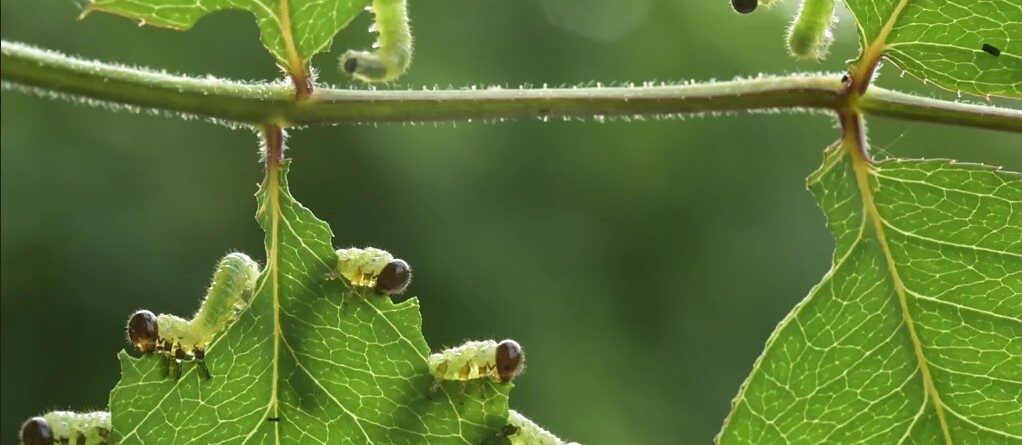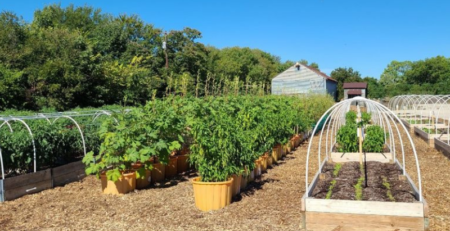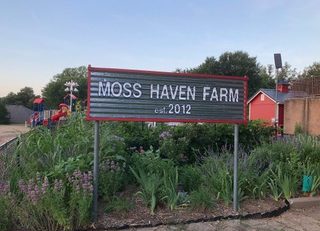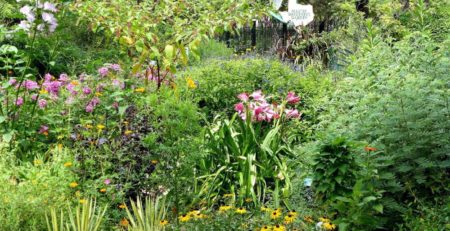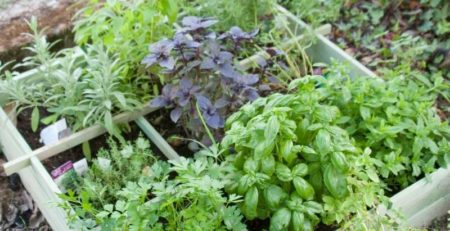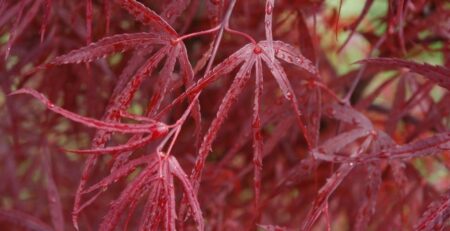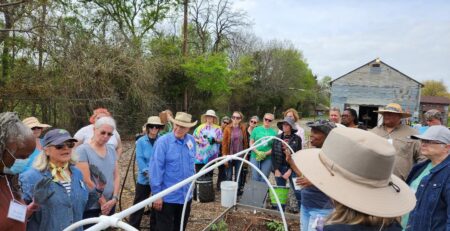Why You Should Let Insects Eat Your Plants
Renegade gardeners across the world are embracing a new philosophy: gardening that prioritises insects, not plants.
The marauders appeared out of nowhere. Looking through my window, I saw them – dozens of what looked like tiny grey caterpillars crawling all over a lovely green plant in my garden. I watched, with some horror, as over a matter of days, these insects chewed the plant to bits.
Countless leaves were munched to nothing, with only sad, spindly stems remaining. Finally, jet-black flies – the grey gobblers transformed – went buzzing off into the world beyond. Presumably, to wreak havoc elsewhere. Initially, I felt like a farmer whose field of maize had just been ravaged by locusts.
However, a little Googling set me straight. It turned out that the plant in question, the name of which was previously unknown to me, was Solomon’s seal or Polygonatum – a classic cottage garden plant that, each summer, becomes locked in a tussle with the very insect invader I had witnessed: Solomon’s seal sawfly. A female sawfly had laid her eggs on my plant. Out of those eggs had hatched the grey larvae that ended up devouring it. And all of this was actually fine.
According to the UK’s Royal Horticultural Society (RHS), Solomon’s seal is relatively unbothered by this extreme defoliation. “This insect can be tolerated and the plants will survive,” the RHS writes on its information page for the insect. What initially seemed like a macabre assault on a perfectly blameless plant was revealed to be just one of those many trade-offs that occur in nature all the time. Solomon’s seal had evolved to simply shrug its shoulders and move on.
All over the world, there are insects that depend on plants for food. They munch at stems, and strip leaves to pieces. They make cuts and holes in otherwise pristine vegetation. To some gardeners, this is anathema. But others recognise that it’s all a natural part of how ecosystems work – and without an insect-rich ecosystem, there would be no gardens at all.
Over the last few decades, a massive global crisis has affected insect populations, which are declining at a rate of between 1% and 2% every year. This means that practically any intervention that could help these creatures is valuable. More people are “planting for pollinators”, with one 2022 survey finding one in three US adults purchase plants to help wildlife, an increase of 26% from 2020. This helps ensure there are lots of native wildflowers to supply bees, hoverflies and butterflies with nectar. But should we also try horticulture for herbivores, too? Should we plant things in the hope they will get gobbled up? To find out, I turned to the experts.
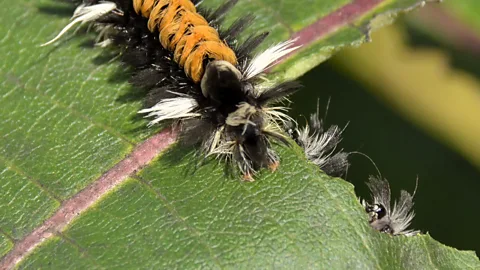 Getty Images
Getty ImagesTussock moth caterpillars eat the leaves of a wide variety of trees and shrubs. And they themselves can make a hairy snack for other wildlife (Credit: Getty Images)
The beautiful red rose bush in a garden previously belonging to Hayley Jones, the principal entomologist at the RHS, was frequently the subject of debate between her and her husband. “He enjoyed the flowers – but I quite enjoyed looking at the sawfly,” Jones tells the BBC. Various species of sawfly larvae would target the rose, she recalls – some would munch away at the leaves while others had very particular dining habits. “There’s one species that rolls the leaves up,” she says. “They eat it from the inside.” A burrito for a bug.
The damage to the rose’s foliage never really bothered Jones and, in general, she says she enjoys watching larvae and caterpillars chow down on plants. If you plant things destined to get eaten, you will naturally encourage the next link in the food chain, as predators such as birds come to your garden, too. A well-balanced garden shouldn’t be munched down to the ground and left a wasteland – that should never happen in a biodiverse system, says Jones.
Having worked for the RHS for nearly a decade, Jones says she has noticed more and more gardeners expressing tolerance of herbivores. The frantic query of “how do I kill it?” from paranoid plant-coddlers has become less common, she explains. And many people enjoy the fact that very eye-catching insect species sometimes target particular plants – such as elephant hawk-moth caterpillars, which love to eat fuchsia.
“I have definitely heard people say they hope their fuchsia will be eaten because [the hawk-moth caterpillar] is just so spectacular,” says Jones.
Another caterpillar some European gardeners enjoy looking out for is the yellow and black-spotted mullein moth caterpillar, which feeds on the flowering plants mullein and buddleia. Then there are cinnabar moth caterpillars, which have very striking black and orange stripes. They tend to eat ragwort.
By and large, insects that consume plants shouldn’t be called pests, argues Jones – they’re just herbivores.
“My garden is primarily for insects,” says Matthew Shepherd, director of outreach and education at the Xerces Society for Invertebrate Conservation in the US, a non-profit organisation that uses science to protect wildlife. “It gets pretty tatty just because there’s so many things chewing and munching,” he says. Shepherd doesn’t mind this at all. He spends hours just watching a variety of different bugs filling their bellies.
One key plant for American gardeners to consider growing specifically for the benefit of insects is milkweed, he says. This is because the caterpillars of the extraordinarily beautiful, yet endangered, Monarch butterfly love to eat milkweed, as do tussock moth caterpillars. People should choose a variety of milkweed that is native to their part of the country, though, he stresses.
 Alamy
AlamyPlant-destroying molluscs have been particularly maligned in the past, but they also play an important role in garden ecosystems (Credit: Alamy)
“We need to be growing the milkweeds that will be emerging at the right time of year if the monarchs are passing through your region,” he says. Sadly, now that this stunning migratory butterfly species is much rarer than it was, he no longer sees it in his own garden anymore – since his plot is located right on the north-western edge of their range.
Insects face all kinds of threats, and on a gigantic scale. For example, the use of pesticides across vast tracts of agricultural land. It might seem unlikely that diminutive private gardens can make much of a difference to their decline. But Shepherd insists that they can: “We’re talking about small animals, so small areas do help.”
Various studies indicate that simple decisions made by gardeners can affect insect abundance. One 2016 paper examined how the size and features of gardens in California influenced bee numbers, for instance. Having lots of flowers and patches of bare ground, which some bees nest in, were found to influence the insects’ numbers positively. But nature doesn’t always react exactly how we might expect. Another study, from the UK in 2005, found that certain nettle patches didn’t automatically attract lots of butterfly caterpillars, which are known to feed on these plants. However, they did attract other nettle-favouring herbivores.
—Article reposted with permission from BBC, click here to read full article on their website

